This set of VLSI Multiple Choice Questions & Answers (MCQs) focuses on “Single Stage Amplifiers”.
1. The input output characteristic of an amplifier is
a) Linear function
b) Non Linear function
c) Sinusoidal function with change of phase
d) None of the mentioned
View Answer
Explanation: The input output characteristic of an amplifier is non linear function. It is given by y(t) = a0 + a1x(t) + a2x(t)^2…..
2. The amplifier works as a linear system for:
a) High frequency signals
b) Low frequency signals
c) Small signals
d) Large signals
View Answer
Explanation: The amplifier works as linear system for small signals and the output y(t) = a0+a1x(t).
3. In MOSFET amplifier, the input is applied as:
a) Voltage across gate and source
b) Voltage across drain and source
c) Current at gate
d) Current at Drain
View Answer
Explanation: The input to MOSFET amplifier is gate to source voltage.
4. In MOSFET amplifier, the parameter that changes due to the changes in input is:
a) Small signal drain current
b) Large signal drain current
c) Voltage across substrate and source
d) None of the mentioned
View Answer
Explanation: Due to the transconductance, drain current changes as input changes.
5. Input impedance of MOSFET amplifier in Common Source configuration is:
a) Very high at high frequencies
b) Very high at low frequencies
c) Very low at high frequencies
d) Very low at low frequencies
View Answer
Explanation: Input impedance of MOSFET amplifier in Common Source configuration is very high at low frequencies.
6. In the below input output characteristic of MOSFET amplifier, if Vin > Vin1, the MOSFET is said to operate in:
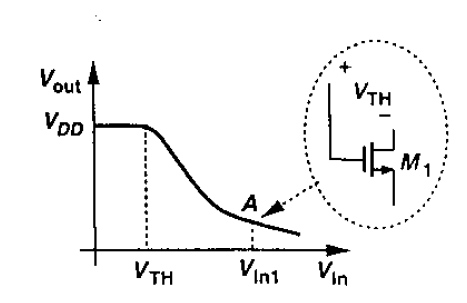
a) Saturation region
b) Cutoff region
c) Triode region
d) None of the mentioned
View Answer
Explanation: When Vin>Vin1, then the transistor is said to operate in triode region.
7. The voltage gain of the MOSFET is given by:
a) Av = -βRd
b) Av = γRd
c) Av = -gmRd
d) None of the mentioned
View Answer
Explanation: The voltage gain is equal to negative of product of transconductance and resistance.
8. The MOSFET is said to be in diode connected configuration if:
a) A diode is placed between supply and drain
b) A diode is placed between source and ground
c) Source and gate are connected
d) Drain and gate are connected
View Answer
Explanation: A MOSFET connected in such a way that both gate and drain are connected to supply, then it is said to be in Diode connected condition.
9. The diode connected MOSFET acts as:
a) Active element for amplification
b) Voltage source
c) Current Source
d) Load Impedance
View Answer
Explanation: The diode connected configuration of MOSFET acts as Load impedance.
10. In the below circuit, if the levels of input and output vary, the gain is found to:
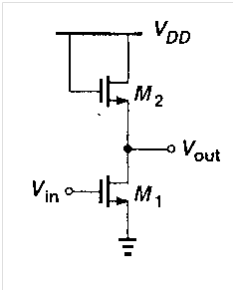
a) Increase linearly as input level increases
b) Decrease linearly as output level decreases
c) Remain constant
d) Vary non linearly
View Answer
Explanation: The gain remains relatively constant for variations in the input and output levels.
11. In the below circuit of Common Source amplifier, the transistor M2 operates as:
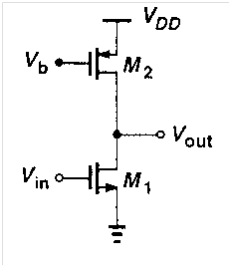
a) Load impedance
b) Voltage source
c) Current Source
d) None of the mentioned
View Answer
Explanation: The transistor M2 operates as current source in Common source amplifier for providing large voltage gain.
12. The advantage of using source degeneration resistor in Common source amplifier is to provide:
a) Huge gain
b) Non Linearity behaviour of amplifier
c) Linearity behaviour of amplifier
d) Less gain
View Answer
Explanation: Introducing degenerative resistor makes the amplifier to operate in linear condition.
13. The graph corresponding to Common source amplifier with source degeneration resistor is:
a) 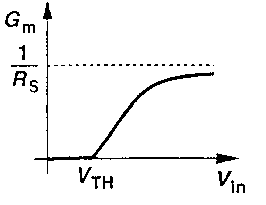
b) 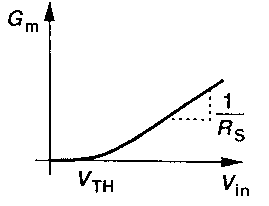
c) 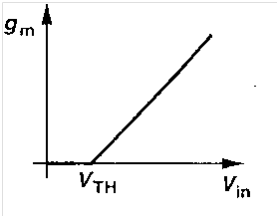
d) None of the mentioned
View Answer
Explanation: Gain remains constant in source degeneration configuration.
14. In the below circuit if the current source is ideal, the voltage gain is:
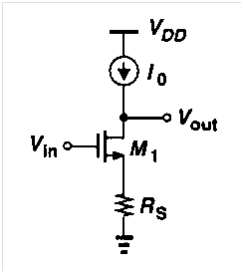
a) Av = -gm.Rs
b) Av = -Io.Rs
c) Av = -gm.Ron
d) None of the mentioned
View Answer
Explanation: Since the current source is ideal, current through Rs cannot change and hence small signal voltage drop across it is zero, making the gain constant and depend on Ron.
15. The input output characteristic of common drain amplifier is:
a) 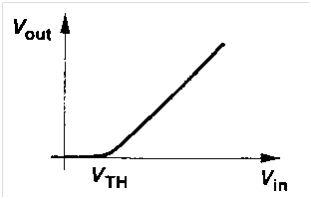
b) 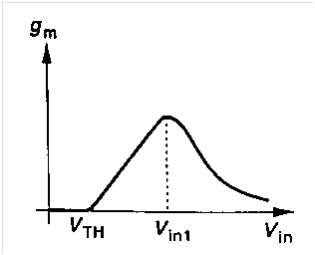
c) 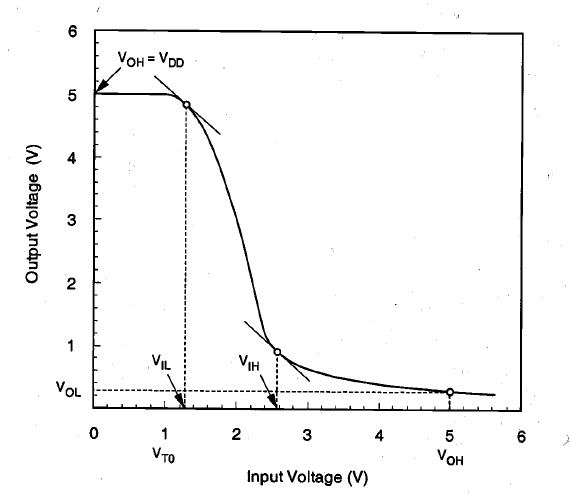
d) All of the mentioned
View Answer
Explanation: None.
Sanfoundry Global Education & Learning Series – VLSI.
To practice all areas of VLSI, here is complete set of 1000+ Multiple Choice Questions and Answers.
If you find a mistake in question / option / answer, kindly take a screenshot and email to [email protected]
